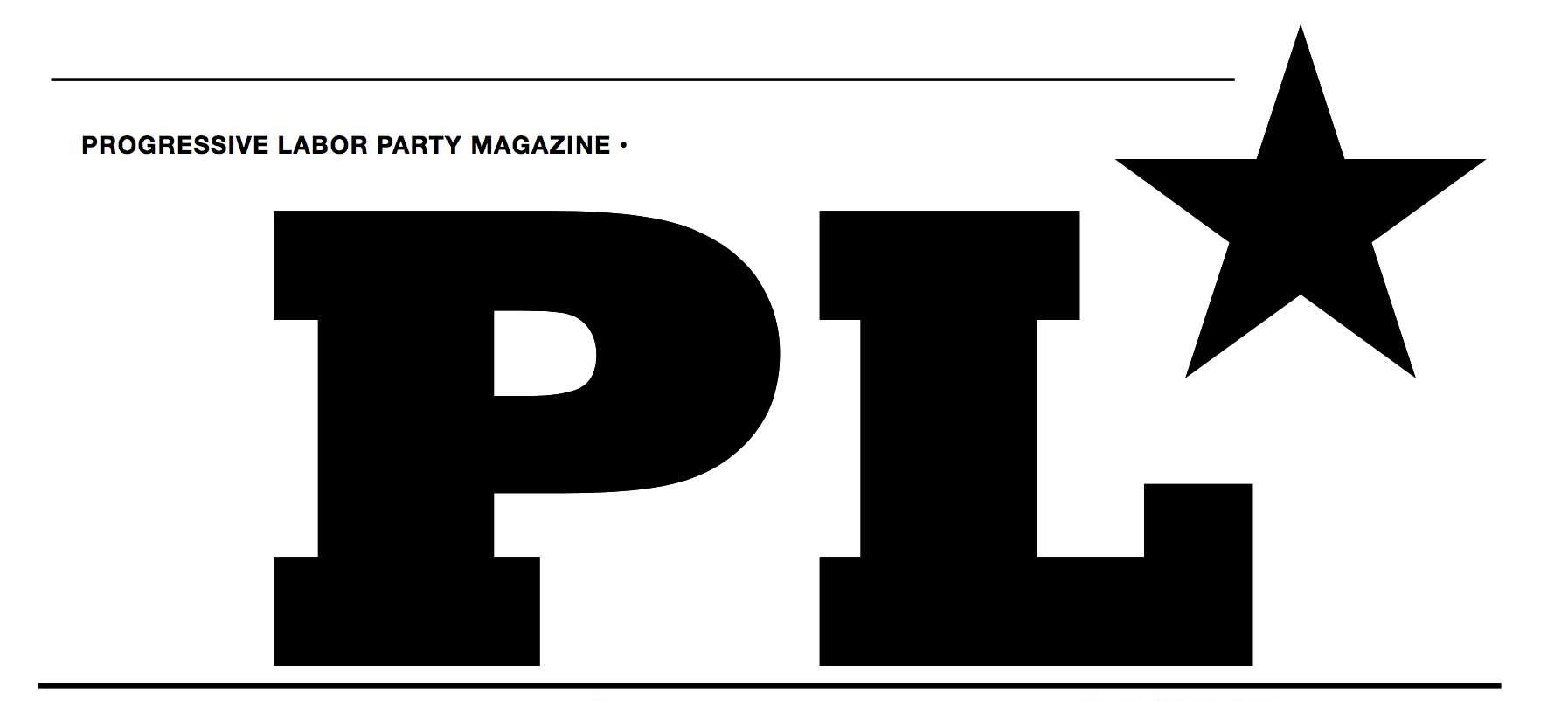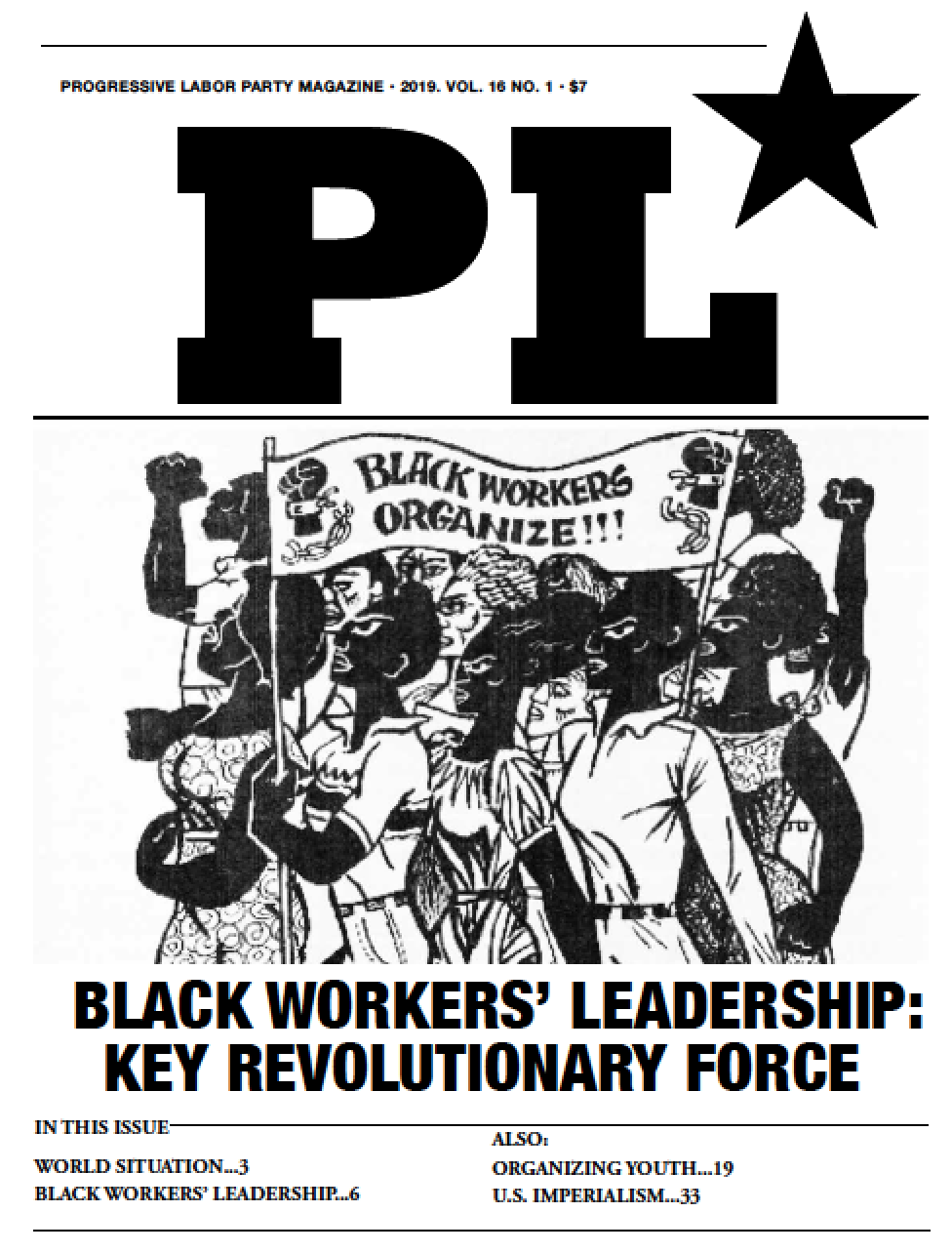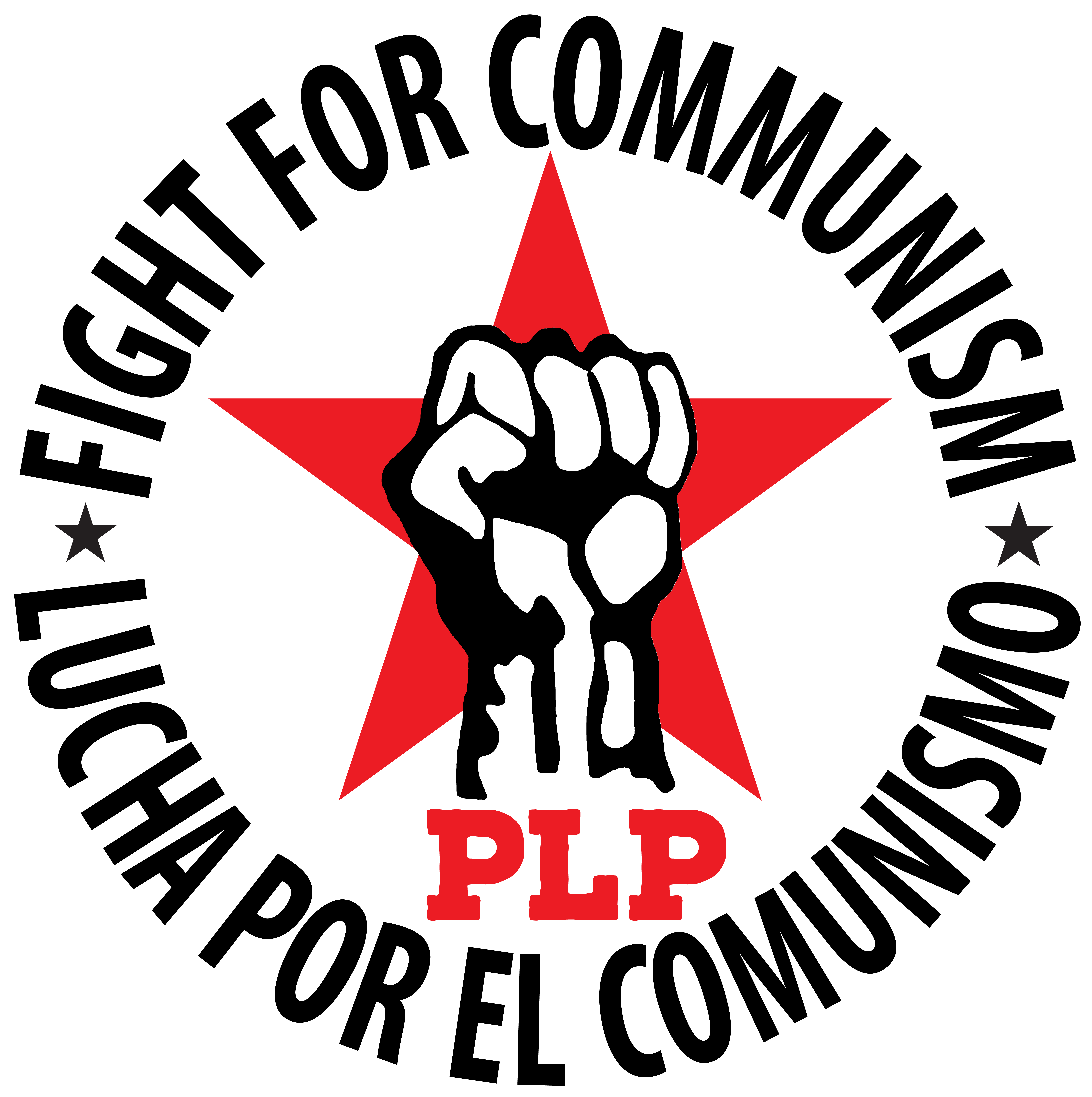PL History: Mack Ave. Plant Takeover
 Thursday, June 4, 2015 at 9:29AM
Thursday, June 4, 2015 at 9:29AM This article continues our account of PLP’s 50-year history. The Party’s concentration among industrial workers, a basic principle in building a communist movement, has helped PLP grow to our current presence in 27 countries on five continents.
In 1970, more than 400,000 workers struck General Motors (then the biggest employer in the U.S.) for 67 days to win a big raise and the 30-and-out retirement pension plan.
Three years later, with watershed contract negotiations looming between the United Auto Workers (UAW) and the Big Three automakers (GM, Ford, and Chrysler), thousands of young, conscious, militant Black workers were an emerging force. The auto bosses had hired about 10,000 Black workers as a direct result of the 1967 Black-led rebellions in Detroit and Newark against racist police brutality and for jobs. Many were Vietnam veterans who had rebelled in 1967 and again in 1968 after the assassination of Martin Luther King, Jr. The Dodge Revolutionary Union Movement (DRUM) and the PLP-led Workers Action Movement (WAM) were gaining strength and credibility by challenging the racism of the UAW leadership and the auto bosses.
PLP was organizing in factories in New Jersey, Detroit, Cleveland and California. In one New Jersey Ford plant, the Party and a Black caucus staged a week-long wildcat strike to stop Ford from using massive overtime to build a stockpile and undermine a possible strike. In the Cleveland Ford plant, we established the first six-hour day committee. Had it been enacted, a six-hour day would have created thousands of new jobs by adding an extra shift.
In Detroit, at Chrysler’s Mack Avenue stamping plant, we were waging an anti-racist health and safety struggle, demanding fans where temperatures routinely soared above 100 degrees. (For workers, the bosses couldn’t find any fans. But when they later replaced workers with robots, they found money for air conditioning.) It was during this struggle, in August 1973, that a PLP member was fired.
Meanwhile, at Huber Foundry, Chrysler workers walked out over a racist incident involving a supervisor. At Jefferson Assembly, a racist foreman called a Black worker the n-word. The worker climbed to the top of the plant and shut off the power. The other workers carried him out on their shoulders and the foreman was fired.
Historic Occupation
At Mack Avenue, our fired member snuck back into the plant and on the line. When Chrysler security tried to remove him, they were beaten back by 350 workers who seized the factory. It was the first plant occupation in the U.S. in more than three decades, since the communist-led Great Flint Sit-Down Strike established the UAW in 1937.
As the Mack Avenue workers secured the plant, the PLP organized support from around the city and surrounding community. Picket lines ringed the plant while workers passed bags of groceries to those inside. The following day, with the Chrysler security guards routed, the bosses called on the cops—the capitalists’ shock troops in class struggle—to evict the strikers. But the 350 workers surged down to the ground floor and met the police with their fists in the air, chanting, “FIGHT BACK! FIGHT BACK!” The cops retreated, no doubt under orders from Chrysler not to destroy the factory.
A detachment of PLP workers and supporters went to UAW Local 212 offices to demand union backing for the strike. When the local president refused, a scuffle erupted. By the time it was over, his glass desk was in little pieces and many union hacks were injured. Then the UAW revealed its pro-boss colors by organizing a thousand thugs from four states to physically retake the plant for Chrysler. Some were known Klansmen; others were newly elected or appointed Black officials. The strikers’ number had dwindled to about 50, too few to repel the UAW hacks and their baseball bats. The fired white comrade and a Black worker who gave crucial leadership to the action were arrested, both charged with felonious assault.
Workers Back PLP
PLP turned to workers and students to wage a political defense in the factories, at Wayne State University, and in unemployment and welfare offices. Many supporters attended the subsequent trial, and many more gave money. The Black worker who was arrested, a Vietnam vet, joined the Party the day he was called to testify. The charges were dropped when the prosecutor was unable to produce a single Chrysler production worker to testify. Not one.
When the plant reopened, UAW officials walked up and down the line with Chrysler bosses, fingering workers who had participated. About 35 were fired on the spot. Most eventually won their jobs back, but our comrades were blackballed from the industry. The UAW and the auto bosses then tried to purge PLP from the auto industry and the union.
From that point on, the UAW functioned as an overt arm of the auto bosses. Six years after the Mack Avenue action, the union entered an agreement with President Jimmy Carter and Chrysler boss Lee Iacocca to bail out the company, closing many plants and wiping out thousands of jobs. The UAW played a similar anti-worker role in 2008, when it accepted Obama’s “restructuring” of the industry after the 2007 economic crisis, which closed dozens of more plants and cut starting pay in half.
PLP’s leadership and the militancy displayed by auto workers — and especially Black workers — reinforced the Party’s concept that the industrial working class can become the heart of a communist revolution.
**
Bosses Gear Up for Next Attack on Auto Workers
2015 is a contract year in auto. This will be the first major negotiations since the contract negotiated after the Obama-UAW-Wall St. bailout of the industry in 2009. That bailout cut starting wages in half, eliminated pensions for new hires and created a second tier of health care.
Ford did not declare bankruptcy in 2009, and will likely be the target company this year. Ford has gone from 36,000 workers in 2011 to 54,000 today, surpassing GM. 17,000 Ford workers are second tier. Huge profits allowed Ford to invest over $8 billion in plant improvements since 2011, to create even higher productivity from a growing low-wage workforce. And this doesn’t include the parts-supplier plants, a third and fourth tier, at 70 percent of assembly plant wages.
The Chicago Ford Assembly plant has over 2300 workers, an increase of 60 percent since the 2009 economic collapse. Two-thirds of these workers are at entry level wages, making under $15 an hour. with a cap of $19 an hour. First-tier workers make about $28 an hour. Work is coming back to U.S. Ford factories due to high productivity and cheap wages in the US.
Many of the delegates at the Special Bargaining Convention in Detroit last March were angry, and the loudest cheers came at any mention of a strike. Senior workers haven’t had a wage increase in almost 10 years, and young workers are tired of making half-pay. One young worker said, “90 percent of the workers in my plant are second-tier…We are exposed to dangerous chemicals [which she rattled off] and health and safety violations. We all need equal pay and healthcare.”
Another delegate said, “My local marched for Mike Brown in Ferguson and Eric Garner in New York City. The fight against racism on and off the job must be at the heart of who we are.” Delegates cheered as earlier that morning, the local news released video tape of Floyd Dent, a Black Ford worker with 37 years seniority, being beaten by racist Inkster police (a Ferguson-style suburb of Detroit).
We work in the unions to fight for the political leadership of the workers, to break them away from the dead-end treadmill of reformism and the Democratic Party. We have been at it for a long time in the UAW, and even though progress is slow, the workers continue to encourage us.





 Progressive Labor Party (PLP) fights to destroy capitalism and the dictatorship of the capitalist class. We organize workers, soldiers and youth into a revolutionary movement for communism.
Progressive Labor Party (PLP) fights to destroy capitalism and the dictatorship of the capitalist class. We organize workers, soldiers and youth into a revolutionary movement for communism.




Reader Comments